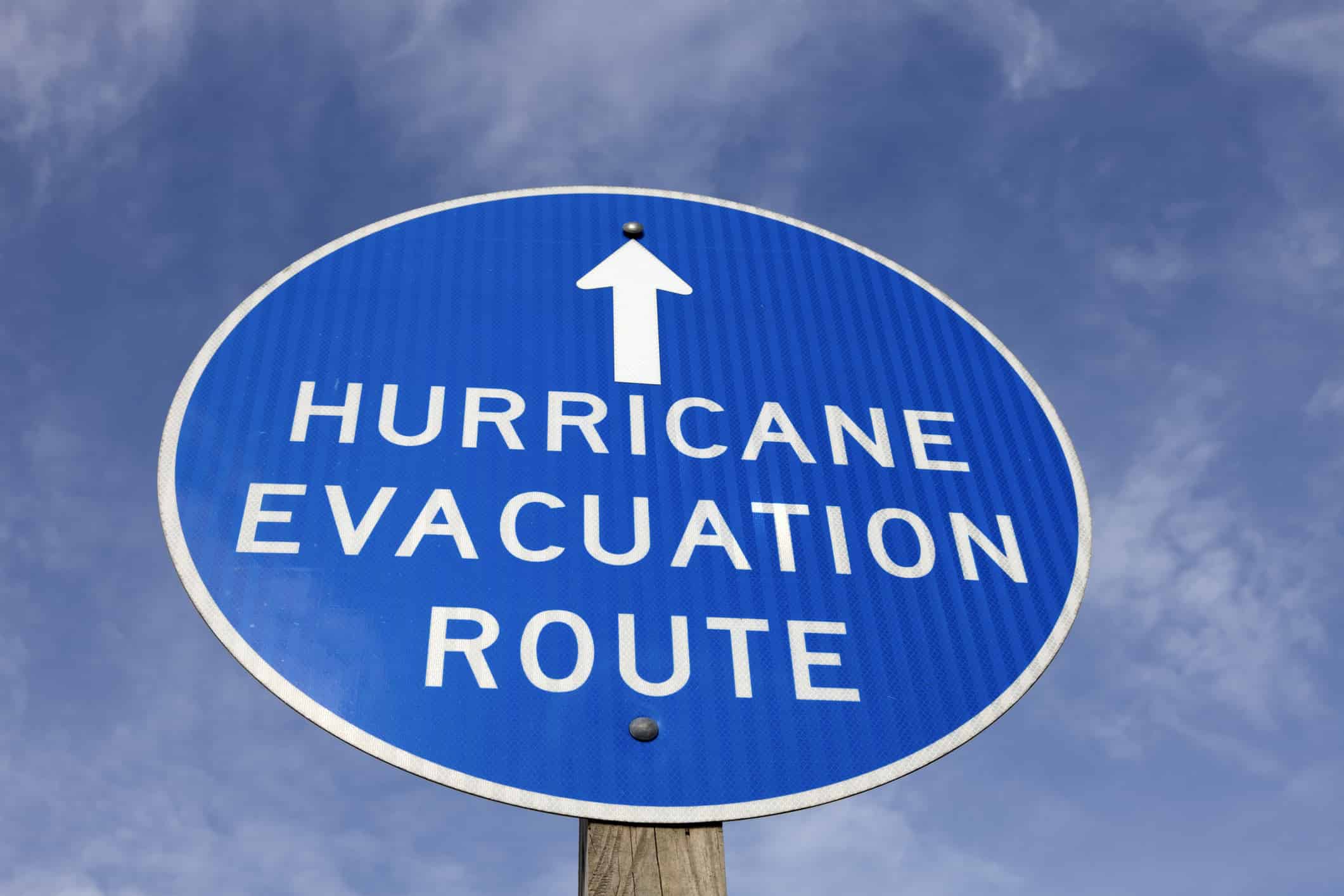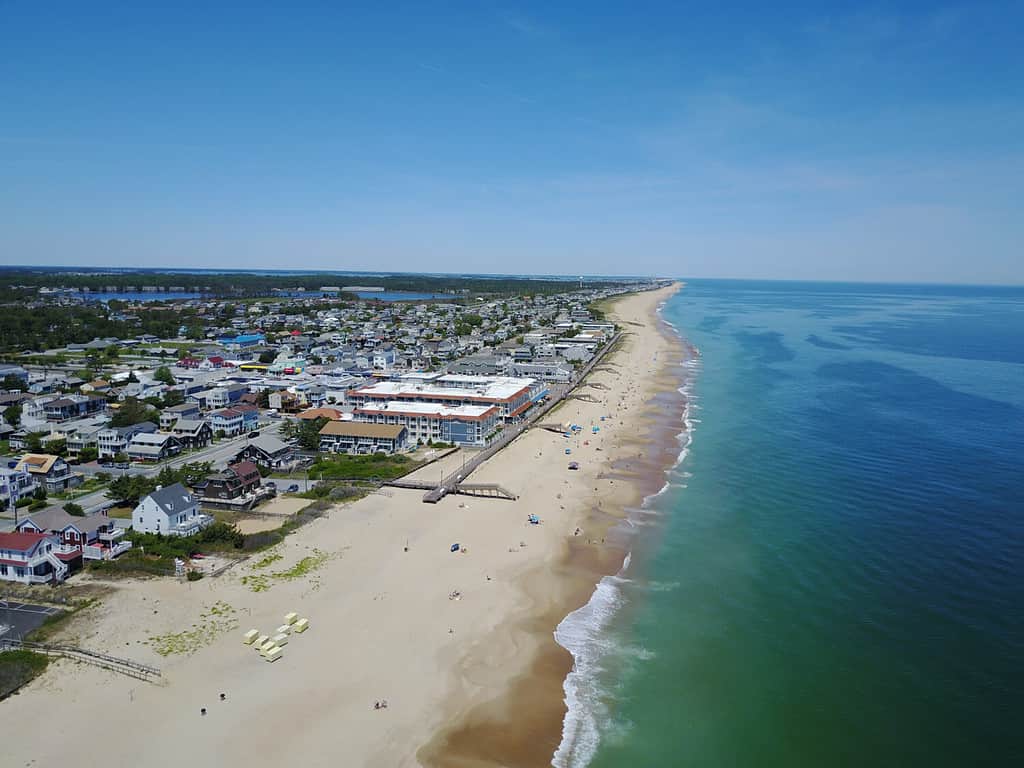The state of Delaware is nestled along the eastern seaboard of the United States. However, it is not typically associated with catastrophic hurricanes. This idea of the state changed when on March 6, 1962, the quiet coastal communities of this small state were brutally awakened by the ferocious and unexpected arrival of the Great Atlantic Storm, also known as The Ash Wednesday Storm of 1962. This was an unprecedented natural disaster that left a trail of devastation in its wake. In this article, we will delve into the details of this historic event, exploring when and where it occurred, its category, speed, and the profound impact it had on the state and its residents.
Delaware, which is often referred to as “The First State” due to its status as the first state to ratify the United States Constitution in 1787, enjoys a relatively temperate climate and is not known for extreme weather events. However, the geography of the state, with its proximity to the Atlantic Ocean, renders it vulnerable to the occasional hurricane.
The Arrival of the Ash Wednesday Storm of 1962
The Ash Wednesday Storm of 1962 made landfall on March 6, 1962 and is typically associated with effects during the dates March 5-9, 1962. This was a particularly unusual time for such an event. This is because storms and hurricanes are more common during the late summer and early fall months. March is typically a time when Delawareans are not concerned with hurricane preparedness but instead anticipate the arrival of spring.
The Location
The storm struck Delaware’s coastline with unanticipated strength, primarily affecting the southeastern part of the state, including the cities of Rehoboth Beach, Bethany Beach, and Fenwick Island. These coastal communities with their idyllic beaches and quaint charm did not expect the sheer force of nature that was about to descend upon them.
The Category and Speed
The Ash Wednesday Storm of 1962 was classified as a tropical storm, which means it did not have enough strength to have a value on the Saffir-Simpson Hurricane Wind Scale. It had maximum sustained winds of approximately 80 miles per hour at the time of landfall. While not as powerful as some of the more infamous hurricanes in history, its impact was amplified by the fact that it occurred during an atypical season.

large waves on the beach after a storm
©Aschen/iStock via Getty Images
Unprecedented Devastation Caused in Delaware
One of the most destructive aspects of The Ash Wednesday Storm of 1962 was its storm surge. The combination of high winds, astronomical tides, and the shape of Delaware Bay created a perfect storm for a catastrophic surge. In some areas, the surge reached an surprising 8 to 10 feet above normal tide levels. This inundated low-lying coastal communities and caused widespread flooding.
Coastal Erosion
The storm’s relentless assault on Delaware’s coastline resulted in unprecedented erosion. Beaches that had once stretched for miles were significantly smaller, and dunes were washed away. The storm’s strength left a lasting mark on the landscape, permanently altering the geography of the region.
Destruction of Infrastructure
In addition to the erosion and flooding, the storm’s powerful winds caused extensive damage to homes, businesses, and infrastructure. Roofs were torn off buildings, power lines were downed, and roads were rendered impassable. The destruction was so severe that it was likened to a war zone by those who witnessed it.
Loss of Life and Injuries
Tragically, the Ash Wednesday Storm of 1962 claimed the lives of seven Delaware residents and caused numerous injuries. The combination of the storm surge, flooding, and flying debris created dangerous conditions for those who were unable to evacuate in time.
Community Resilience in Delaware
In the face of the impending disaster, Delaware’s emergency services and law enforcement agencies acted swiftly to evacuate residents and tourists from the most vulnerable areas. These efforts saved countless lives and prevented even greater losses of life.
The Coast Guard’s Heroic Efforts
The United States Coast Guard played a vital role in the rescue efforts during and after the storm. Coast Guard personnel traversed through treacherous conditions to rescue stranded individuals from flooded homes and vehicles. Their courageous actions, therefore, earned them the gratitude and admiration of the affected communities.
Community Resilience
Despite the devastation, the people of Delaware came together in the aftermath of the hurricane. Neighbors helped neighbors, and volunteers from all over the region arrived to lend a hand in the recovery efforts. This sense of community resilience and unity in the face of adversity is a testament to the strength of the human spirit.
The Aftermath of the Storm in Delaware

Hurricane evacuation route sign – seen in Dover, Delaware
©benkrut/iStock via Getty Images
The recovery process from the Ash Wednesday Storm of 1962 was a long and arduous one. Rebuilding homes and infrastructure, restoring beaches, and addressing the erosion problem required significant time and resources.
Lessons Learned
The hurricane served as a wake-up call for Delaware and the entire mid-Atlantic region. It underscored the need for improved hurricane and storm preparedness, early warning systems, and coastal management strategies. In the years that followed, measures were put in place to mitigate the impact of future storms.
Coastal Protection
One of the most significant changes following the 1962 storm was the implementation of coastal protection measures. Officials initiated beach replenishment programs, seawalls, and dune restoration projects to safeguard the coastline and prevent further erosion.
Wildlife in Delaware and the Impact of Hurricanes
Delaware, despite its relatively small size, has a diverse range of wildlife due to its geographical location on the east coast of the United States. The state’s unique blend of coastal and inland habitats provides a home for a wide variety of species, from delicate shorebirds to elusive mammals. However, when storms like the the Ash Wednesday Storm of 1962 strike, they can have profound effects on wildlife and their habitats.
Coastal Habitats in Delaware
Delaware’s coastal areas are especially rich in biodiversity. The state’s extensive shoreline, including salt marshes, tidal flats, and barrier islands, provides essential habitats for many species of birds, fish, and marine invertebrates. These areas serve as breeding grounds, feeding zones, and stopover points for migratory species along the Atlantic Flyway.
Inland Ecosystems
As we move inland, Delaware’s landscape transitions to hardwood forests, freshwater wetlands, and meadows. These diverse ecosystems also support a wide range of wildlife, including white-tailed deer, red foxes, songbirds, and amphibians. The state’s rivers and creeks are, therefore, vital for the survival of both freshwater fish and various species of turtles.

The
barred owl
is one of many interesting animals living atop Delaware’s highest point.
©Daniel J. H. McDonald/Shutterstock.com
Disruption of Habitats
When a storm like the Ash Wednesday Storm of 1962 makes landfall, it can have devastating consequences for Delaware’s wildlife. The most immediate and obvious impact is the disruption and destruction of habitats. Coastal areas often bear the brunt of storm-induced flooding, which can inundate marshes, destroy nests, and erode beaches. This upheaval can lead to the displacement of countless species.
Nesting Birds
Delaware’s beaches are also crucial nesting sites for several species of shorebirds and sea turtles. Hurricanes and storms can wash away nests, eggs, and even young hatchlings. For example, the piping plover, a federally threatened species, relies on Delaware’s beaches for nesting. The loss of nests due to a hurricane or storm can have a severe impact on their already fragile population.
Migratory Birds
Delaware also serves as a crucial rest stop for migratory birds, providing food and shelter along their journey. Hurricanes and storms can disrupt these crucial pit stops by damaging or flooding wetlands, reducing the availability of food, and making it harder for birds to find safe roosting spots. This can lead to exhaustion and a higher mortality rate among migrating species.
Fish and Aquatic Species
Hurricanes and storms can also have significant effects on aquatic life as well. Excessive rainfall associated with storms can cause rivers and streams to overflow, leading to increased sedimentation and nutrient runoff. This can harm fish populations and their spawning grounds by altering water quality. Additionally, the extreme fluctuations in water levels during and after a hurricane can disrupt the life cycles of fish and other aquatic organisms.
Long-Term Effects
While some wildlife populations may bounce back relatively quickly after a storm, others may suffer long-term consequences. For example, the destruction of dunes and coastal vegetation can lead to increased erosion, which, in turn, affects the availability of nesting sites and shelter for various species. The long-term recovery of these habitats can take years or even decades. This means that hurricanes and storms, even after they are over, can continue to impact wildlife for an extended period.
Conservation and Mitigation Efforts in Delaware

Delaware’s coastal communities were protected from the effects of future storms and hurricanes after the storm of 1962.
©Zach Chilelli/Shutterstock.com
Recognizing the vulnerabilities of its wildlife and ecosystems, Delaware has taken several steps to mitigate the impacts of hurricanes and protect its natural resources.
Coastal Restoration Projects in Delaware
In the aftermath of the Ash Wednesday Storm of 1962, Delaware initiated coastal restoration projects aimed at rebuilding dunes and beaches. These efforts not only protect human infrastructure but also safeguard critical nesting and foraging areas for shorebirds and sea turtles.
Wetland Conservation
Delaware has invested in wetland conservation and restoration programs to ensure the resilience of these vital habitats. Healthy wetlands serve as natural buffers against storm surges and provide essential breeding and feeding grounds for many species.
Monitoring and Research in Delaware
The state conducts ongoing research and monitoring of its wildlife populations, especially those that are vulnerable to hurricanes. This data helps conservationists and biologists understand how these species are affected and devise strategies to protect them during and after storms.
Final Thoughts
The Ash Wednesday Storm of 1962 was a major struck Delaware in March of that year. Even though it wasn’t a hurricane, it was worse than any of the hurricanes the state has ever experienced. In fact, it is one of the most unexpected and devastating natural disasters in the state’s history. It left a lasting mark on the Delaware coastline, reshaping the landscape and the lives of those who call it home. While the storm brought tragedy and destruction, it also showcased the resilience and strength of Delaware’s communities.
As we reflect on this historic hurricane, it serves as a reminder of the unpredictable and destructive power of nature. It also highlights the importance of preparedness, community cooperation, and the ongoing efforts to protect vulnerable coastal regions from the forces of the Atlantic Ocean. The Ash Wednesday Storm of 1962 may have been a dark chapter in Delaware’s history, but it also illuminated the spirit of its people in the face of adversity.
Thank you for reading! Have some feedback for us? Contact the AZ Animals editorial team.







